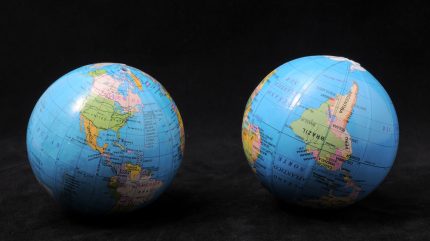
University of Delaware professor of fashion and apparel studies Dr Sheng Lu who conducted the study describes the prospect of Sub-Saharan Africa (SSA) as an apparel-sourcing base for US fashion companies as a “growing heated debate”.
He explains that due to increasing geopolitical concerns and other market factors, US fashion companies are eager to diversify apparel sourcing away from Asia. Plus, the SSA region is often regarded as one of the most popular alternative sourcing destinations thanks to its large population, relatively low labour costs, and shorter shipping distance to US ports compared to most of Asia.
Plus, he points out the African Growth and Opportunity Act (AGOA) trade preference programme allows eligible apparel exports from SSA countries to enter the US import duty-free, which creates substantial financial incentives for US fashion companies to source from the SSA region.
How did the study test Africa’s viability for US apparel sourcing compared to Asia?
His study examined the detailed product information of a total of 10,000 stock keeping units (SKUs) of clothing items sold in the US retail market from January 2021 to December 2023.
It found half of the items were sourced from the six largest apparel-exporting countries in SSA: Lesotho, Kenya, Mauritius, Ethiopia, Madagascar, and Tanzania. Together, these countries accounted for over 96% of the value of US apparel imports from the SSA region between 2021 and 2023.
The remaining half came from China, Vietnam, Bangladesh, Cambodia, India, and Indonesia, which are the six largest Asian apparel exporters and accounted for approximately 90% of US apparel imports from Asia over the past decade.
Study’s key findings
Dr Lu tells Just Style the empirical trade data shows that US apparel imports from SSA members have stagnated over the past decade without evident growth.
Notably, he reveals that with little change from 2010, SSA countries collectively accounted for only 1.8% of US apparel imports in 2023, with no single SSA member achieving a market share of more than 1%.
In contrast, over the same period, despite China’s declining market shares, the following five largest Asian suppliers — Vietnam, Bangladesh, India, Indonesia, and Cambodia — jointly accounted for 43.0% of US apparel imports in 2023, a notable increase from 27.4% in 2010.
Africa is being used for niche and smaller orders
Dr Lu explains the results show US fashion companies’ sourcing strategies for SSA countries appeared more subtle and complicated than simply treating the region as another low-cost sourcing destination, as suggested by previous studies.
Instead, he notes the results show that “US fashion companies seem to be leveraging SSA countries as suppliers of “niche products,” such as those relatively simple and basic apparel categories containing African cultural elements and targeting the luxury and premium market segment”.
Meanwhile, the demand for such products could be much smaller than regular apparel items sold in the value and mass market.
“This allows SSA countries to fulfil these smaller orders despite their limited production capacity, often family-owned or involving handmade processes,” he says.
Africa’s product range remains limited compared to Asia for US apparel sourcing
The study also identifies significant challenges for SSA countries serving as immediate alternatives to sourcing from Asia for US fashion companies: “While SSA countries could offer relatively low sourcing costs, the range of apparel products available for US fashion companies to source from the SSA region remained significantly more limited than those from Asia”.
He offers an example of the results showing US fashion companies preferred sourcing relatively basic and technologically simple categories like knitwear, T-shirts, and bottoms from SSA countries.
However, he continues: “Imports from SSA countries offered more limited sizing and colour choices and were less likely to include womenswear and relatively more sophisticated or specialised product categories such as outerwear and swimwear.”
Another example, is US apparel imports from SSA countries were primarily made of cotton and polyester, with less use of other fibre types, including nylon, rayon, viscose, wool, and those made from recycled textile materials.
Africa needs to move beyond basics, expand materials to boost US apparel competitiveness
Dr Lu suggests the results call for new thinking on strengthening SSA countries’ genuine competitiveness as an apparel-sourcing destination.
He explains: “Over the past decades, trade preference programmes such as AGOA have mainly focused on improving the price competitiveness of SSA countries’ apparel exports. However, as this study’s findings illustrate, AGOA and other trade preference programmes seemed inadequate in assisting SSA countries in developing capacity beyond basic apparel categories and securing a sufficient variety of textile materials.”



